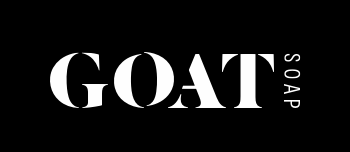Male and female goats, known as bucks and does, respectively, possess unique characteristics that differentiate them from one another. From physical attributes to behavior patterns, these distinctions contribute to the overall diversity within goat populations.
In this article, we will explore the differences between male and female goats, shedding light on their physical traits, social dynamics, and reproductive characteristics. By understanding these distinctions, goat enthusiasts can deepen their knowledge of these fascinating creatures and appreciate the diversity that exists within goat herds.

Physical Characteristics
Do Female Goats Have Horns?
Yes, both male and female goats can have horns. However, in some breeds, males tend to have larger and more pronounced horns compared to females. So, while both can have horns, you can often tell a male goat from a female goat depending on the size of their horns rather than their absence or presence.
Do Female Goats Have Beards?
While male goats commonly sport beards, it is not exclusive to them. Certain female goats, particularly in breeds like the Angora and Cashmere, may also develop beards, although they are generally less prominent than those of males. Like horns, having a beard doesn’t always point to a male goat, but if a goat has a beard a man would be envious of, it’s probably a male goat.
Size and Build
On average, male goats tend to be larger and more muscular than females. This disparity in size is more noticeable in sexually mature bucks.
Social Behavior and Temperament
Dominance
Male goats often exhibit dominant behavior, particularly during the breeding season, when they compete for the attention of females. This can manifest in head-butting and displays of aggression.
Herd Hierarchy
Within a herd, male goats typically establish a social hierarchy, with the dominant male asserting his authority over the others. Female goats generally display a more cooperative and nurturing demeanor.
Vocalizations
Male goats are often more vocal than their female counterparts, especially during the breeding season. They emit deep, resonant vocalizations called "buck vocalizations" to attract females and assert their dominance.

Reproductive Characteristics
Estrus Cycle
Female goats experience estrus, commonly referred to as "heat," approximately every 18 to 24 days during the breeding season. This is the period when they are receptive to mating.
Gestation and Birth
The gestation period for goats is typically around 150 days. Female goats give birth to one or more kids, with twins being the most common. They provide maternal care and nourishment to their offspring.
Scent Marking and Mating Rituals
Male goats employ scent marking to attract females during the breeding season. They may urinate on their front legs or rub against objects to spread their scent. Additionally, bucks engage in elaborate displays, such as head-butting and mounting, to assert dominance and court females.

Milk Production
While both male and female goats possess mammary glands, milk production is a characteristic exclusive to female goats, or does. Female goats are bred and selectively raised for their milk, which is used for various dairy products.
Conclusion
Male and female goats exhibit distinctive characteristics that set them apart from each other. Physical traits like horns and beards can vary in prominence, while social behavior and temperament showcase different dynamics within goat herds.
Understanding these distinctions allows us to appreciate the diversity within goat populations. Whether it's the dominance and vocalizations of male goats or the reproductive and nurturing qualities of female goats, each gender contributes to the fascinating world of goats. By delving into the unique traits and behaviors of male and female goats, we can deepen our understanding and connection with these remarkable animals.

